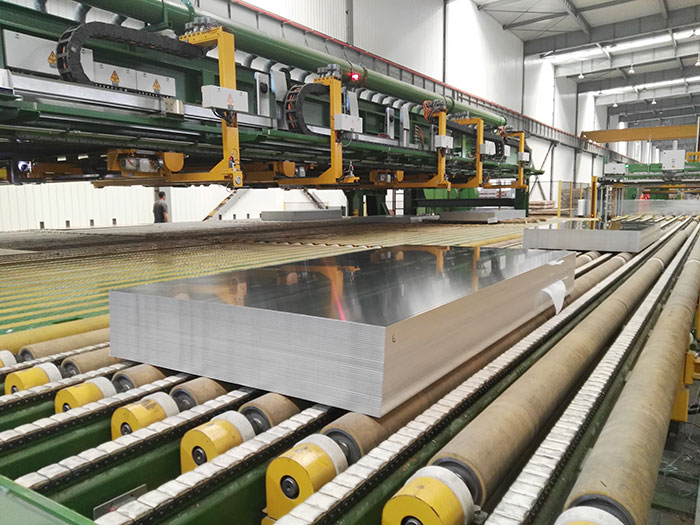Our company produces high quality
3003-o aluminum sheet for a wide range of applications.
3003-o aluminum sheet are commonly used for heat exchange aluminum. The aluminum alloy used in the heat exchange system has 1XXX series, 3XXX series, 4XXX series, 5XXX series, 6XXX series alloys, and also cast aluminum alloys; The aluminum materials used are: plates, strips, foils (including
bimetallic plate), extruded pipes and profiles, die-casting parts, forgings and bars, and punching parts.
Heat shield
In the power train of the car, there are mostly heat insulation boards. More than 60% of the cars are equipped with one piece, and many are equipped with 5 or 6 pieces. The environment in which the car is used can cause considerable corrosion to low carbon steel, so car manufacturers must choose aluminum plates. Aluminized low-carbon steel plates or stainless steel plates are used to make heat-insulating plates, usually 0.5mm aluminum alloy plates, most of which are used in
5182 aluminum sheet, others are 1050, 5052 alloys,
3003 h14 aluminum sheet and aluminum alloy plates are used to manufacture heat-insulating plates. Quite strong competitiveness.
Heat exchange aluminum
The amount of processed aluminum in the automobile is secondary, accounting for only about 20% of the aluminum alloy used. In addition to individual all-aluminum body cars, the most used aluminum in cars is the heat exchange system, which is the indoor climate control system, namely heating, ventilation and air conditioning. The heat exchange system of each car and light truck has an aluminum content of approximately 15KG. In fact, the radiator, condenser, evaporator and radiator core have all been made of aluminum alloy, of which 3005 aluminum sheet and
3003 h14 aluminum sheet account for 50%.
The condenser must withstand high internal pressures, must use a single extruded tube, and cannot be welded with thin plates. All condensers now use extruded microtubes. The compressor casing is die-cast, accounting for approximately 23% of the total aluminum used in the heat exchange system. In recent years, the compressor scroll manufactured by the impact extrusion accounts for only about 1% of the aluminum used in the system, but its performance is higher than that of the die-casting part, and it is more material-saving and high in production efficiency. It is a potential process. In short, automotive heat exchange systems are moving toward smaller, lighter and better performance.


